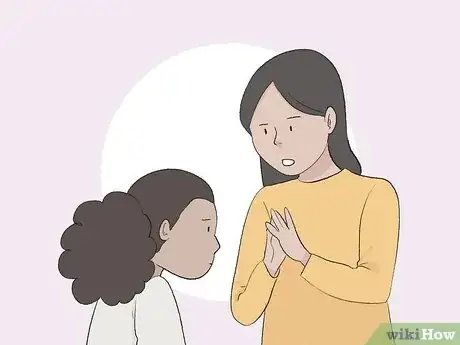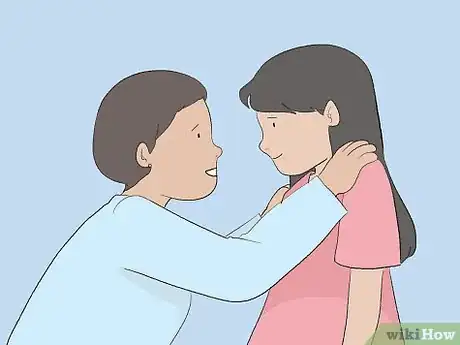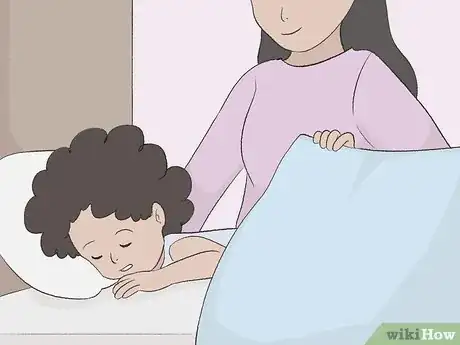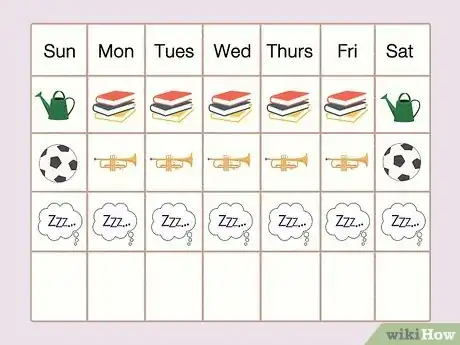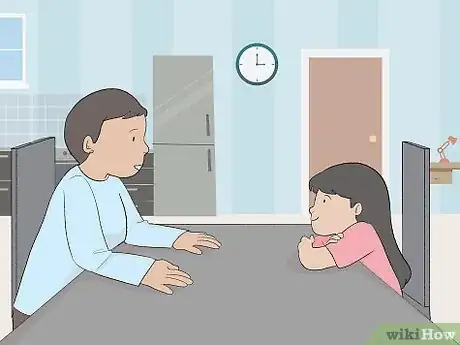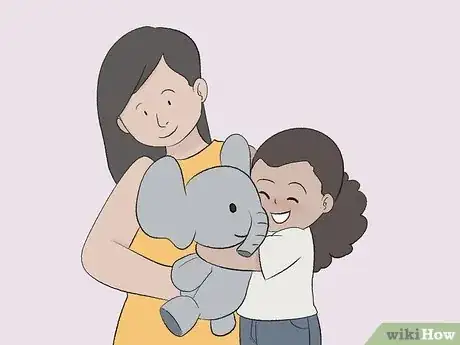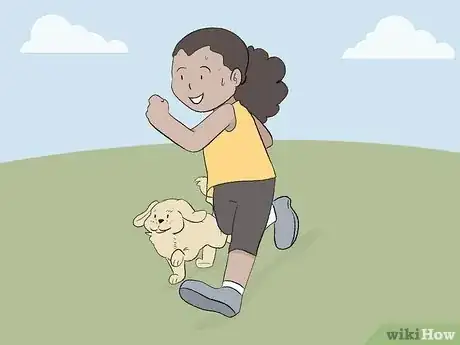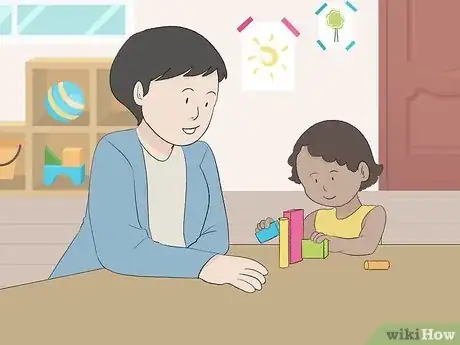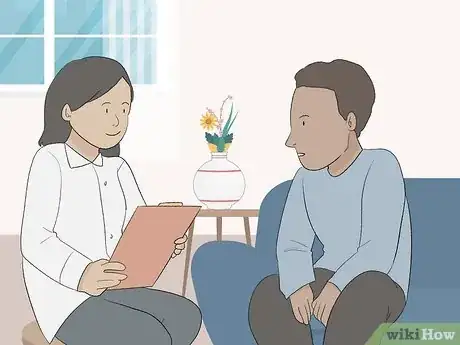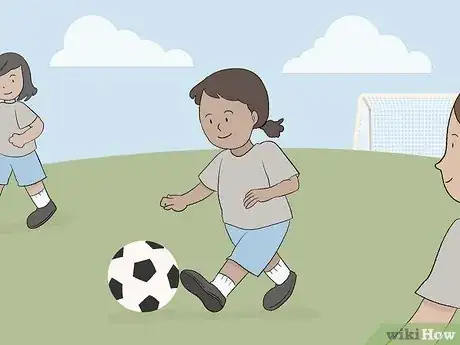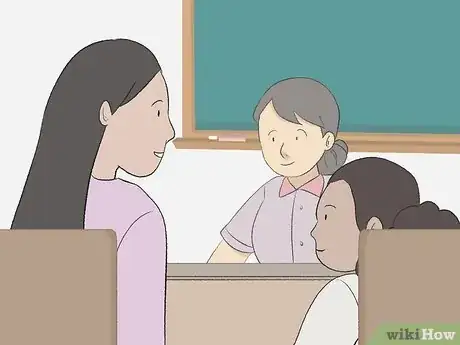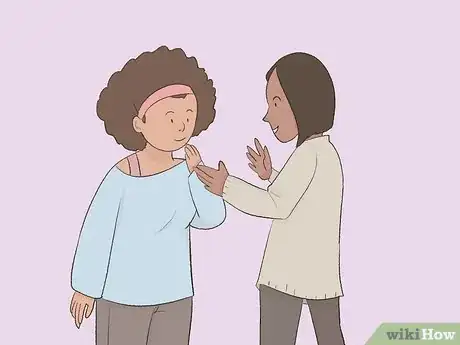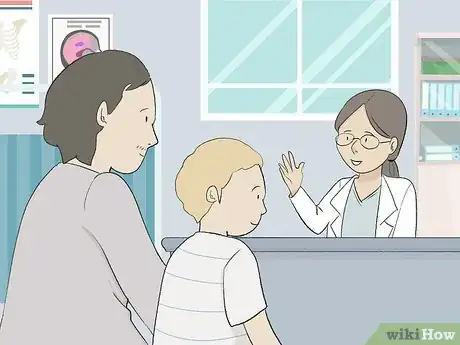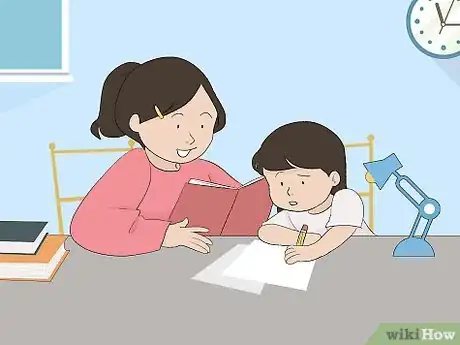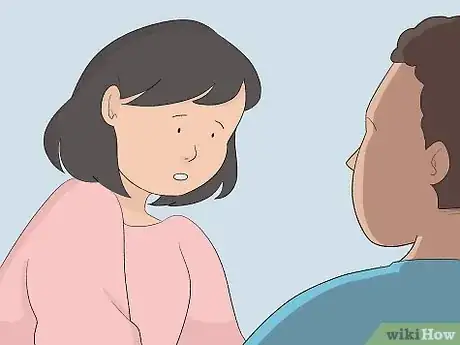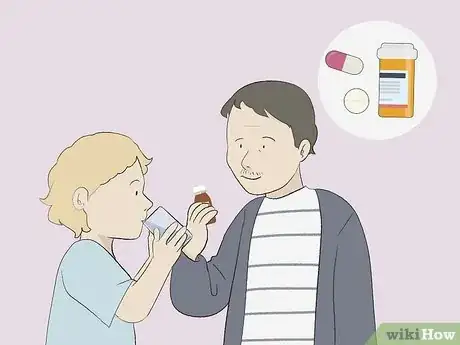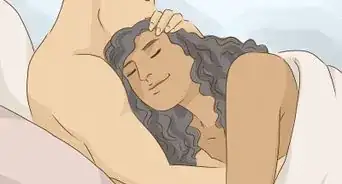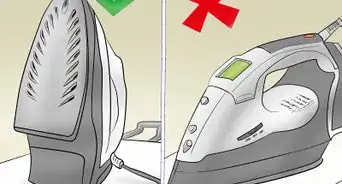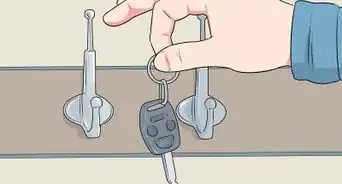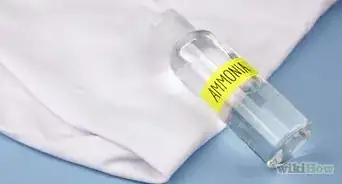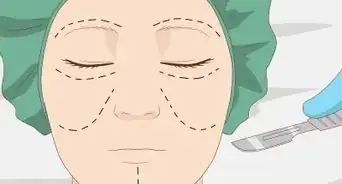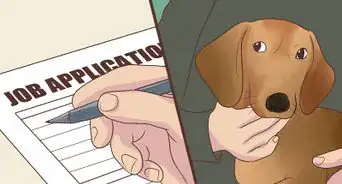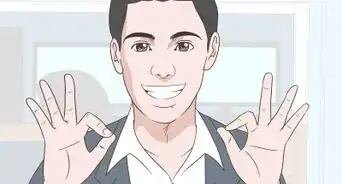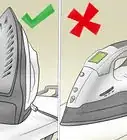This article was co-authored by George Sachs, PsyD and by wikiHow staff writer, Amber Crain. George Sachs is a Licensed Psychologist and the Owner of Sachs Center based in New York, New York. With over ten years of experience, Dr. Sachs specializes in treating ADD/ADHD and Autism Spectrum Disorders in children, teens, and adults. He holds a BS in Psychology from Emory University. Dr. Sachs earned his Doctorate of Psychology (PsyD) from the Illinois School of Professional Psychology, Chicago. He completed his clinical training in Chicago at Cook County Hospital, Mt. Sinai Hospital, and the Child Study Center. Dr. Sachs completed his internship and postdoctoral work at the Children’s Institute in Los Angeles, where he supervised and trained therapists in Trauma-Focused Cognitive Behavioral Therapy (TFCBT). He has been trained as a Gestalt Therapist and certified by the Gestalt Associates Training Program of Los Angeles. Dr. Sachs is the author of The Adult ADD Solution, Helping the Traumatized Child, and Helping Your Husband with Adult ADD. He has appeared on the Huffington Post, NBC Nightly News, CBS, and WPIX discussing his holistic approach to ADD/ADHD treatment.
There are 13 references cited in this article, which can be found at the bottom of the page.
This article has been viewed 25,950 times.
Prescription medication is a popular and effective treatment for ADHD in children, but you may not feel comfortable giving these strong medications to your child. You’re not alone—many parents feel this way! Pediatric experts recommend exploring other treatment options, like behavioral therapy, before resorting to medication, especially for children under the age of 5. However, if your child doesn’t respond to natural treatments after 6 months, it's best for their well-being to make an appointment with a doctor to explore other treatments.
Steps
Creating a Structured Home Environment
-
1Establish specific house rules for your child. Start with simple things like no snacking between meals, knocking before entering, not interrupting others, asking for permission, and so on. Try posting the house rules on the refrigerator so everyone in your family can see them. If your child is too young to read, you can go over the rules verbally or even draw pictures.[1]
- Good house rules to consider for young children and preteens: no running in the house, putting toys away after playing, no interrupting, and knocking before entering rooms.
- House rules for ADHD teenagers might include: no electronic devices until homework is completed, asking permission before leaving the house, and keeping their room clean.
-
2Enforce consistent consequences immediately after they break the rule. Children with ADHD have short attention spans, so your child may not make the connection between the punishment and the rule if you don’t enforce the punishment immediately. Avoid scolding or spanking your child when they break a rule. Instead, remind them of the rule and provide gentle disciplinary actions like time-outs or removal of privileges.[2]
- Dole out the same consequences every time a certain violation occurs.
- For example, if you have a "no running in the house" rule and your 8-year-old comes barreling through the door, say their name in a slightly raised voice to get their attention. Remind them that running isn't allowed and put them in a time-out for 5 minutes. Do this every time the rule is broken.
- If your 13-year-old breaks the "no internet before homework" rule, remind them gently that this isn't allowed and take away the device until their homework is completed.
-
3Set a consistent sleep routine for your child. Be consistent with your child's bed time every night. Power down electronics, lower the lights, and reduce noise in the house about an hour before bed time to help ease them into sleep. Wake your child up at the same time every day, as well.[3]
- For example, a night routine for your toddler might begin with a warm bath at 7pm, followed by tucking them in and reading to them until 8pm (or until they fall asleep). Set your alarm for 7am and wake your child at that time every day.
- Don’t let your child take naps during the day to encourage a full night of sleep.[4]
- Children with ADHD tend to have a hard time falling asleep. Waking up can also be a problem since they often don’t get enough sleep during the night. This negative cycle can worsen their ADHD symptoms.
-
4Follow a set schedule for your child’s daily tasks. Routine and structure are extremely important for children with ADHD. Schedule times for all of your child’s daily tasks, such as chores, homework, hobbies, and any other common activities. Try to be consistent and schedule tasks at the same time every day.[5]
- Since ADHD children are easily distracted, consistent routines provide a framework for them to fall back on. If they get distracted, gently remind them what time it is and what they need to do.
-
5Simplify the environment by limiting electronics and distractions. Electronics can be useful learning tools, but they also tend to overstimulate children with ADHD. Keep electronic distractions at home to a minimum. Limit electronic use to specific times of the day and keep them off at all other times. Keep noise levels down.[6]
- Put your phone on silent so incoming notifications and text messages don’t disrupt tasks.
-
6Provide a limited number of choices to avoid overwhelming your child. Children with ADHD can get distracted if they're given too many options. Keep your child on track by providing 2-3 options when allowing your child to make a decision.[7]
- For example, during craft time you might ask your 6-year-old to choose between finger painting and modeling clay.
- If you have a teenager, you might ask them to choose an after-school activity and give them 2 options: sports or music lessons.
-
7Reward successes to encourage your child and improve self-esteem. Children with ADHD tend to feel like they are always doing the wrong thing. Providing specific praise and attention for appropriate behaviors gives them something positive to hold on to. This can help build their self-esteem and it's also crucial for reinforcing the good behavior.[8]
- For example, you might say, “Thank you so much for taking out the trash on time today! That really helped me out.”
- You could also say something like, “You’re doing such a good job on your homework every day—our study schedule is really paying off! I’m so proud of you.”
-
8Maintain a clean and organized environment to help your child focus. Children with ADHD are constantly trying to make sense of their environment, so keeping it clean and organized can help them focus. Try to keep your child’s room and play areas clean and clutter-free.[9]
- For example, try establishing a storage system that separates frequently-used items into categories, like toys and school supplies.
-
9Make sure your child gets at least 30 minutes of physical activity daily. Physical activity is crucial for a child’s development whether they have ADHD or not. Help your child find a physical activity that they enjoy so they’re more likely to participate willingly. Encourage noncompetitive and low-pressure sports and activities, like swimming, track, or martial arts.[10]
- You can also integrate simple exercises into your daily life at home. For example, go on family bike rides or walk to school every day with your child. Even backyard games of tag can be helpful!
Can Dietary Changes Reduce ADHD Symptoms? Limiting sugar intake and feeding your child a balanced diet can have a positive effect on their development and behavior. However, specific foods and dietary restrictions as they relate to controlling ADHD symptoms aren't well-understood.[11]
Exploring Therapy Options
-
1Find a pediatric behavioral therapist for your child. A good therapist can make a big difference in your child's life and help them manage their condition. Initial appointments may include at least 1 parent, since the therapist will want to learn about the child’s structure and routines. From there, you might continue seeing the therapist as a family or allow the therapist to work with your child one-on-one.[12]
- Experts recommend that children ages 2-5 go through behavioral therapy before resorting to any other type of treatment.[13]
- One-on-one therapy may include talking, playing, and other activities that help your child express feelings and thoughts in a constructive way.
- Family therapy can be helpful for older children with disruptive behaviors. Positive communication and conflict resolution techniques are usually the focus.
- A combination of cognitive and behavioral therapies might be helpful for ADHD children with anxiety and depression.
-
2Go through a parental behavior management program with a therapist. It’s important for you to arm yourself with the skills and tools required to help your child. Parent coaching focuses on effective discipline strategies, like using rewards and consequences in a constructive way. The goal is to learn about ways to manage your child’s negative behaviors and increase positive behaviors.[14] Behavioral parent training usually lasts for 8 to 12 sessions.[15]
- Behavioral management training is recommended for parents who have children with ADHD regardless of the child's age. Parent coaching can help you significantly whether your child is a toddler or a teenager![16]
- A therapist can also help you create a structured routine for your child.
- They are also qualified to help you address the difficult emotions associated with parenting an ADHD child.
-
3Enroll your child in therapeutic summer camps, activities, and sports. Signing your child up for social activities like scouting, sports teams, and summer camps can be fun and also help them learn to socialize, which is a particular problem for kids with ADHD. Ask your child what they’re interested in and send them off to a summer camp or community program where they can learn and interact with other kids.[17]
- You can also consider activities that you can do together, like volunteering at a food bank or soup kitchen.
-
4Talk to your child's teachers about options during school hours. When your child is at school, you can't be there to make sure they're following the routine. Consider getting your child evaluated for special education and inquire about an individualized education plan (IEP). If your child qualifies for special assistance, you can work with school staff to create a routine and provide assistance tailored to your child's unique issues.[18]
- It's important that teachers understand your child's condition, so be sure to communicate with them openly and honestly. Ask for their assistance in providing a productive routine at school.
- For example, if your 11-year-old child's school breaks lunch into a few separate sessions, request that your child attend the lunch period that's most consistent with the timing of their home routine.
-
5Join a support group if you’re having trouble coping with your emotions. Parenting a child with ADHD can be difficult! It’s easy to get stressed out and you may wonder if you are somehow at fault for your child’s condition. Talking to other parents who are in similar situations can be helpful. Check out local support groups and try attending a few meetings.[19]
- It is absolutely not your fault or a result of bad parenting if your child has ADHD.
- ADDitude Magazine is a free online resource you can turn to for more suggestions: http://www.additudemag.com.
When to Seek Medical Care
-
1Get an official diagnosis before trying any kind of treatment. ADHD shares symptoms with other conditions, so it’s easy to misdiagnose your child. A professional diagnosis is necessary before you can address the problem effectively. If your child exhibits ADHD symptoms for more than 6 months, take them to a doctor or a mental health professional for a proper diagnosis.[20]
- Other conditions that can have similar symptoms: bipolar disorder, anxiety, depression, thyroid disorders, epilepsy, learning disorders, and behavior disorders.
-
2See a doctor if your child can’t focus on tasks after 6 months. Natural intervention may not be effective if your child is unresponsive after several months of trying. If they continue to have problems paying attention and can't seem to follow instructions, it’s time to see a doctor for help and advice. Other focus and concentration symptoms may include:[21]
- Doesn’t respond or appear to hear when spoken to
- Forgetful in daily activities
- Makes frequent careless mistakes on homework and school assignments
- Inability to follow instructions correctly
-
3Seek medical help if your child’s hyperactivity doesn’t improve. Enlist the help of a doctor or therapist if you’re unable to control your child’s behaviors. Symptoms of hyperactivity include excessive talking, fidgeting, squirming, and an inability to stay seated. It can also include behaviors like acting without thinking, blurting out answers in class, and an inability to wait their turn. Other disruptive behaviors to watch for:[22]
- Frequently interrupts or intrudes on others
- Inability to take part in leisure activities quietly
- Inability to correct behaviors after being disciplined
-
4Consider prescription medication if natural treatments don’t work. Uncontrolled ADHD symptoms can have a severe and negative impact on your child’s daily life. Try to be open to the idea of medication if other techniques don’t seem to be working. Using a combination of natural treatment and medication can be an effective solution! Be sure to discuss your specific concerns with your child’s doctor.[23]
- Parents are often worried about stimulant medications. Ask your doctor about non-stimulant options if you’re worried about this.
- Always follow your doctor’s instructions exactly and give your child their medication at the correct time each day.
References
- ↑ https://www.cdc.gov/ncbddd/adhd/treatment.html
- ↑ https://www.cdc.gov/ncbddd/adhd/treatment.html
- ↑ https://www.cdc.gov/ncbddd/adhd/treatment.html
- ↑ https://www.ncbi.nlm.nih.gov/pmc/articles/PMC2687494/
- ↑ https://chadd.org/for-parents/behavioral-therapy-for-young-children/
- ↑ https://www.cdc.gov/ncbddd/adhd/treatment.html
- ↑ https://www.cdc.gov/ncbddd/adhd/treatment.html
- ↑ https://chadd.org/for-parents/behavioral-therapy-for-young-children/
- ↑ https://www.cdc.gov/ncbddd/adhd/treatment.html
- ↑ https://childmind.org/article/adhd-and-exercise/
- ↑ https://www.ncbi.nlm.nih.gov/pmc/articles/PMC5266211/
- ↑ https://www.cdc.gov/childrensmentalhealth/parent-behavior-therapy.html
- ↑ https://chadd.org/for-parents/behavioral-therapy-for-young-children/
- ↑ George Sachs, PsyD. Licensed Psychologist. Expert Interview. 9 October 2020.
- ↑ https://chadd.org/for-parents/behavioral-therapy-for-young-children/
- ↑ https://www.cdc.gov/ncbddd/adhd/treatment.html
- ↑ https://www.apa.org/monitor/2013/02/easing-adhd
- ↑ George Sachs, PsyD. Licensed Psychologist. Expert Interview. 9 October 2020.
- ↑ https://www.nimh.nih.gov/health/publications/attention-deficit-hyperactivity-disorder-adhd-the-basics/index.shtml
- ↑ https://www.nimh.nih.gov/health/publications/attention-deficit-hyperactivity-disorder-adhd-the-basics/index.shtml
- ↑ https://www.cdc.gov/ncbddd/adhd/diagnosis.html
- ↑ https://www.cdc.gov/ncbddd/adhd/diagnosis.html
- ↑ https://kidshealth.org/en/parents/adhd.html
